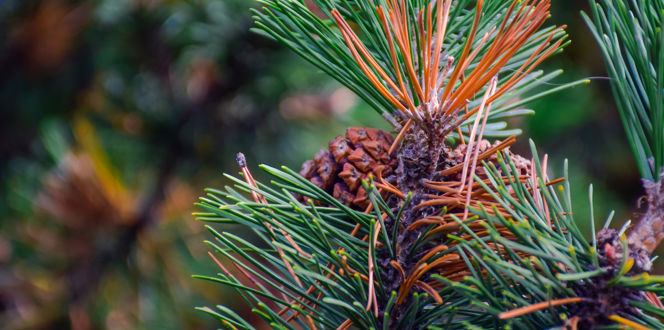Ash Flower Gall Description:
Ash flower gall is a symptom of the feeding activity of microscopic mites known as ash flower gall mites.
Hosts:
Only male ash trees are affected by this mite. Because of seed problems associated with female ash trees, many cultivar selections of male trees were made and planted in landscapes. Ash flower gall is, therefore, more noticeable because large numbers of male trees are present.
Biology & Symptoms:
Female mites overwinter under bud scales and in bark crevices of male trees. They may become active up to three weeks prior to bud break. When the buds break in spring, the mites move to the inconspicuous male flowers that open at the same time. The mites feed by sucking sap from the flowers. As they feed, they inject a chemical into the flowers that causes the tissues to swell and distort. Eggs can develop into adults within 10-14 days. Unaffected male flowers soon shrivel and fall to the ground, while affected flowers form globular galls that remain on the tree. During the growing season, the galls are green and inconspicuous. In the fall, they turn brown and remain on the trees even after the leaves drop. They are most noticeable during the winter months when the leaves are absent. The galls may remain into the next growing season, so both green and brown galls may be present. Ash flower galls do not threaten tree health, although they detract from the appearance of the tree. The distorted flowers do not interfere with a normal twig or leaf development.
Ash Flower Gall Treatment & Management:
Because the galls do not cause actual damage or injury, treatments for managing this pest are seldom warranted. However, heavy infestations seem to be more common on stressed trees. The presence of ash flower gall can be considered an indicator of trees that would benefit from cultural improvements. Results from attempts to manage ash flower gall through chemical applications have been inconsistent. Often, more galls were present after the treatments were made. Beneficial mites, those that prey on ash flower gall mites, are commonly found together with the ash flower gall mites. Treatments to destroy the flower gall mites will also destroy the beneficial ones. The best management strategies are optimizing the overall health of the trees and allowing predatory mites to function.





